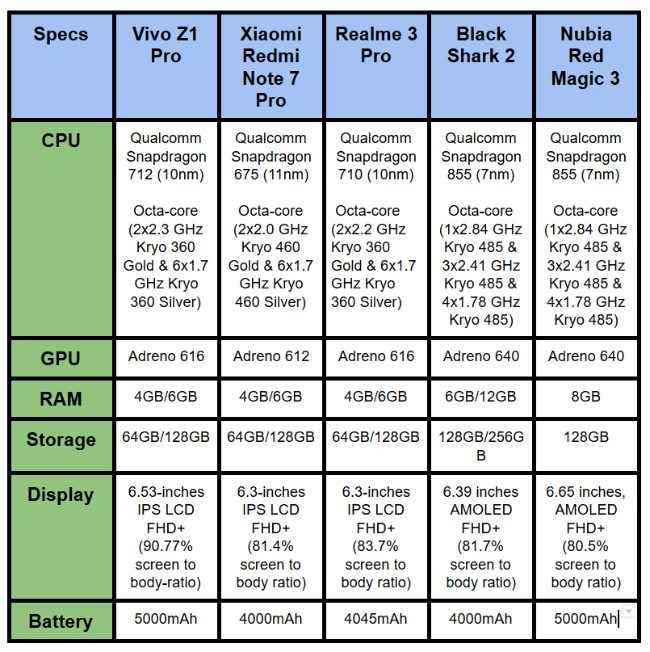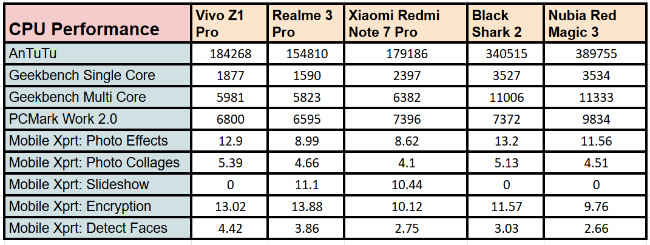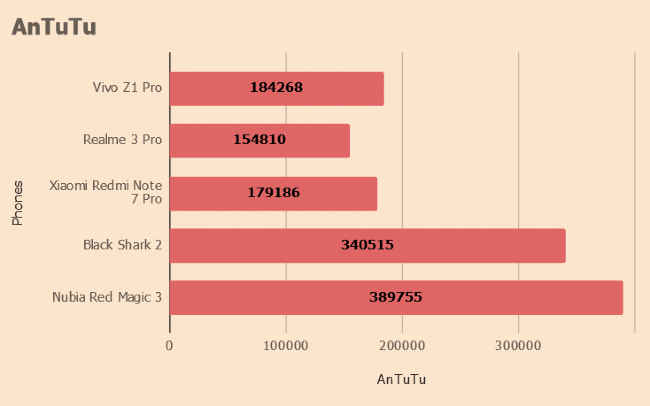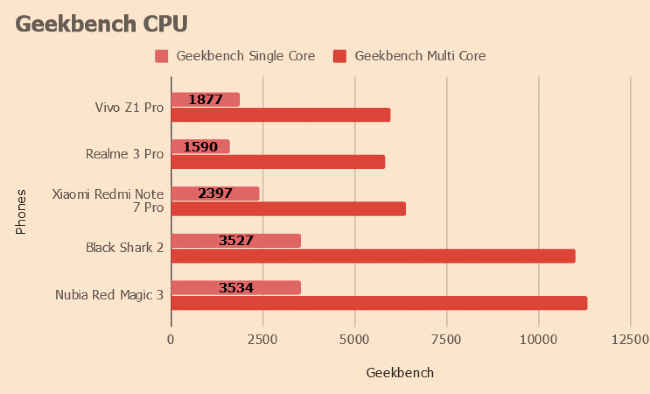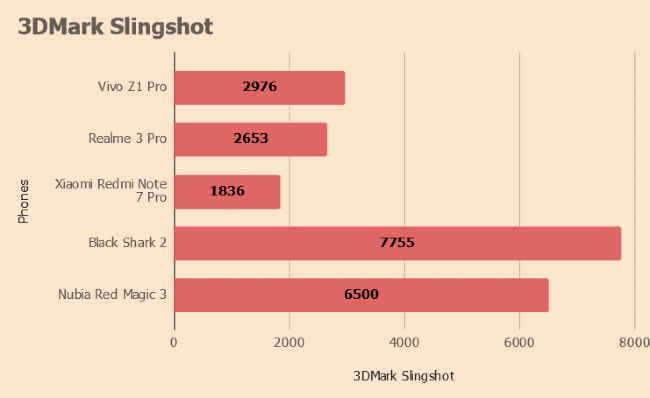Vivo Z1Pro gaming review: Worthy of the gaming phone title?
The Vivo Z1Pro is the official smartphone for the PUBG Mobile Club Open 2019.
While the smartphone handles PUBG Mobile pretty well, it struggles to offer the same stability and frame rates in other games.
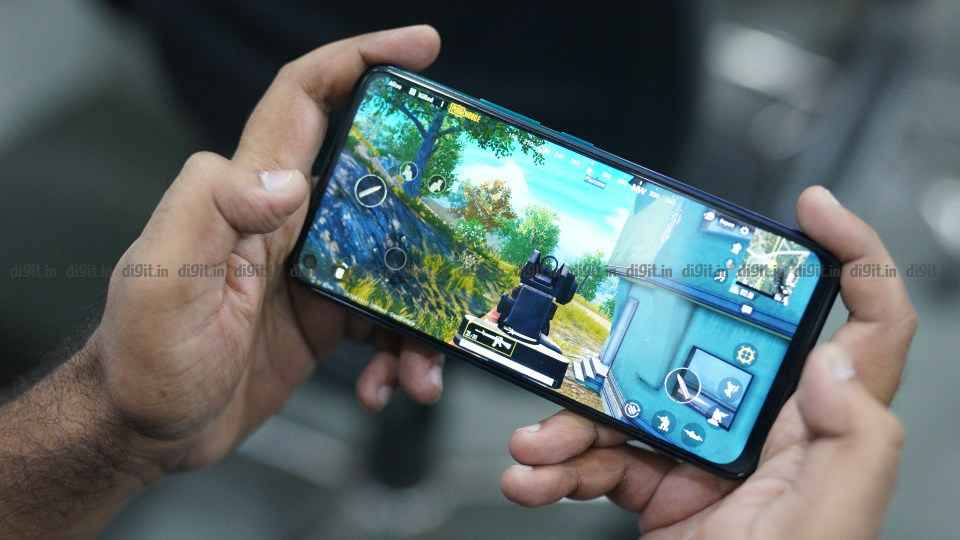
2019 is turning out to be the year when smartphone gaming started to be taken seriously. Thanks to Fortnite and PUBG Mobile, mobile games have never been more competitive, spurring tournaments with crores of money pooled in for the winner. There has been no dearth of smartphones aimed at these new breed of gamers. While most phones can run these games we relative ease, we also saw two gaming phones launch back to back last month — The Black Shark 2 and the Nubia Red Magic 3, both touting flagship hardware and some impressive gaming chops. Yet, for the Indian market, a majority of mobile gamers still prefer the affordable mid-range phones for their dose of adrenaline. Enter the Vivo Z1Pro. A new series from the Chinese smartphone maker that is going to be sold online-only, and is aimed at the burgeoning breed of mobile gamers. The Vivo Z1Pro is also the official smartphone of the recently concluded regional finals PUBG Mobile Club Open where team SOUL won to represent India at the global finals in Berlin.
 Survey
SurveyIf you were planning to buy the Vivo Z1Pro for the sole reason of playing PUBG Mobile, we have some good news. The phone can run the game pretty smooth. But what about other games? More importantly, how does the core performance square up against its mid-range rivals and the flagship gaming phones? We find out.
Vivo Z1Pro vs Redmi Note 7 Pro vs Realme 3 Pro Benchmark analysis
The Vivo Z1Pro falls under the same breed as the popular mid-rangers like the Realme 3 Pro and the Redmi Note 7 Pro. In fact, the Vivo Z1Pro is the first smartphone with the Snapdragon 712 inside. It’s a small step up in comparison to the Snapdragon 710 as we will see in benchmark numbers, but it does make for an interesting ingredient to fuel high-performance gaming. For this comparison, we compared the raw performance of the Vivo Z1Pro against the Realme 3 Pro and the Redmi Note 7 Pro, and for perspective, we also added the performance metrics from the Black Shark 2 and the Nubia Red Magic 3, to show how much of a difference a flagship gaming phone makes in comparison to mid-range offerings. But before we begin, here’s the spec-sheet of the phones we’re comparing the Vivo Z1Pro against.
Straight off the bat, it’s evident that higher the price, better the hardware. Although there are aspects where the gap is closing in really fast. Interesting to notice, however, was how close the Vivo Z1Pro came in comparison to the Redmi Note 7 Pro and the Realme 3 Pro. The Snapdragon 712 on the Z1Pro seems like an overclocked version of the Snapdragon 710, which only a slightly higher clock-speed at 2.3GHz. The custom CPIU cores and the GPU on the Realme 3 Pro and the Vivo Z1Pro are the same, and so are the RAM and storage variants offered by all the three mid-rangers in this comparison. There are also subtle differences as well. The display, for one, feels a lot wider and immersive as compared to the other two. That’s primarily because the Z1Pro has the front camera drilled into the top corner of the display, which while gaming tends to stay hidden under the palm giving the feel of an edge-to-edge panel. The Redmi Note 7 Pro and the Realme 3 Pro come with waterdrop notch where the front camera is still at the top center and there is no way to avoid it other than to black out that part and in turn, shrinking the screen size. Having said that, the quality of the display is also more or less the same, with subtle differences when placed next to each other.
In comparison, the flagship gaming phones offer an AMOLED display, not necessarily larger than the Z1Pro, but much better in terms of touch sensitivity, refresh rate and colour fidelity. There’s of course the flagship Snapdragon 855 which gives these phones the required firepower along with up to 12GB RAM like in the Black Shark 2 and 256GB storage. The GPU is also much faster, and as such, a better performance is more or less guaranteed. How much better is what we’re here to find out.
Lastly, there’s something in these phones that won’t be captured in the hardware specification sheet. The software optimsations put in place to ensure smooth gaming. One of the reasons why the Black Shark 2 and the Nubia Red Magic 3 call themselves gaming phones is the level of hardware tweaking they allow. Both phones allow users to ramp up the CPU and GPU performance to get the most out of the hardware while gaming, to ensure there’s no slowdown. The Vivo Z1Pro too has a fleshed-out gaming mode. It’s after all the official smartphone for PUBG Mobile Club Open. You have options to restrict background tasks, improve network connectivity, enable 4D vibrations and even get some training in understanding in-game sounds like footsteps and gunfire. There are similar mode in the Realme 3 Pro as well as the Redmi Note 7 Pro, although not as fleshed out as the Vivo Z1Pro.
Now that we have a fair idea of what to expect from each of these smartphones, let’s start with our tests.
Performance benchmarks
CPU Performance
The Vivo Z1Pro’s CPU performance is a step ahead of the curve. Thanks to a faster clock speed, the AnTuTu score of 184268 is higher than even the Redmi Note 7 Pro’s 179186 which have been dominating the mid-range charts all this while. There’s not a huge difference though, but we do notice a marked difference between the AnTuTu score of the Snapdragon 710-powered Realme 3 Pro and the Vivo Z1Pro, despite having the same CPU cores inside. Needless to say, the scores of the Snapdragon 855-powered phones are one of the highest we have seen. In fact, the Nubia Red Magic 3 breaks the record set by the OnePlus 7 Pro earlier this year.
On Geekbench though, the Snapdragon 675 on the Redmi Note 7 Pro shines through, beating the Snapdragon 712 and the Snapdragon 710. The single core performance is near around the scores of the flagship Snapdragon 855. That of course gets wiped in the multi-core test where the flagship phones show why they fetch a premium. Nevertheless, it’s interesting to see the Vivo Z1Pro’s CPU lag behind the Snapdragon 675, but comfortably beating the Snapdragon 710. To recall, the Snapdragon 675 was built keeping gaming performance in mind which should have made this chipset an obvious choice for Vivo. But then, debuting a new chipset also grabs the required eye-balls, even though it isn’t necessarily faster.
The raw CPU performance is then tested with real-world use cases on Mobile Xprt 2015 and PCMark Work 2.0 and the numbers show despite having a faster CPU, the performance in the real-world is saturating across price-ranges real fast. In fact, in certain cases, the mid-range phones are faster or at par with the flagships in computing tasks like applying photo effects, encryption, face detection and the likes.
GPU Performance
Interestingly, despite sporting the same Adreno 616 GPU, the Vivo Z1Pro is slightly faster in rendering graphics than the Realme 3 Pro, as revealed by the 3D Mark Slingshot scores. However, the Adreno 616 GPU is no match for the Adreno 640 in the Snapdragon 855. That’s the fastest mobile GPU out there right now for Android phones and it shows. The Redmi Note 7 Pro, however, lags far behind. Looking further, the GFXBench scores make things a little confusing. The top spots are different for each test making it inconclusive. Having said that, we noticed that all the three mid-rangers in question completed the tests much faster than other mid-range phones we have seen in this price range.
The GPU performance also reveals the stark difference between the flagship Snapdragon 855 and the mid-range 7-series and 6-series chipsets. Qualcomm doesn’t like to reveal the innards of its GPU much, so we don’t know the exact clock-speeds they are operating at, but it’s clear that the Adreno 640 is a class apart from the rest. It’s also evident that with each passing generation, Qualcomm’s GPUs are only getting faster and better. We did ruminate as to why Vivo didn’t use the Snapdragon 675 considering it has better CPU benchmark numbers. But the lower GPU scores put that argument to rest.
Vivo Z1Pro vs Black Shark 2 vs Nubia Red Magic 3 Gaming Performance
All that firepower inside phones, and the only way to test them was to play the most intensive titles Android has to offer. We aren’t complaining though. Games like PUBG Mobile, Shadowgun Legends, NFS No Limits and Infinity Ops are highly resource-intensive, and give us good instances to measure the performance of these smartphones. We played 15 minute sessions of each of the games mentioned below and recorded the metrics using Gamebench. We tabulated median FPS FPS stability, temperature after 15 minutes and power consumed.
PUBG Mobile
Our first game was PUBG Mobile. This is the smartphone made to play the popular battle royale game at tournament level. However, what struck the most was the fact that the Vivo Z1Pro couldn’t breach the 30FPS mark in the game. PUBG Mobile can go up to 40FPS deliver smoother gameplay. In the Settings, there was no option to switch to HDR graphics and the FPS was capped at ‘High’ instead of ‘Ultra’ as in the case of the flagships. However, while the FPS count is lower, the frame rate stability is nearly the same in the Vivo Z1Pro as compared to the flagship gaming phones. The Z1Pro gave 97 percent frame rate stability, higher than the Nubia Red Magic 3. The Black Shark 2, however, is indisputable which excellent graphics and textures and super smooth gameplay. Both the Black Shark 2 and the Red Magic 3 was running at max performance. Furthermore, the Nubia Red Magic consumed the most amount of battery to power through the 15 minute session with 166.77mAh consumed, while the Black Shark 2 took up 152.39mAh power. The Z1Pro was the most efficient with 97.58mAh. The high battery consumption by the Nubia Red Magic 3 is because it has a physical fan inside that draws heat away from the processor. Expectedly, the Red Magic 3 was the coolest with 35.4 degrees while both the Black Shark 2 and the Vivo Z1Pro ran quite hot, going above 40 degrees.
Shadowgun Legends
This is a game that can truly eke out every bit of resources out of a smartphone. Running at high graphics settings with everything maxed out, we got a meagre 33 FPS on Vivo Z1Pro while the Red Magic 3 capped out at 48FPS. Neither of them had good FPS stability also. The Black Shark 2, however, stayed true to its gaming pedigree by deliver 60 FPS at 98 percent stability. This smooth performance, however, came at the cost of the phone heating up. At 48.5 degrees, it was impossible to hold on to the device. Not that the other phones managed any better. Both the Red Magic 3 and the Vivo Z1 Pro breached the 40 degree mark by a good margin, but the thermal constraints came into effect much faster in the Red Magic 3 and the Vivo Z1Pro as compared to the Black Shark 2 where the overheating didn’t seem to have any impact in performance. We also saw the Red Magic 3 once again consuming the most amount of battery as the fan inside spinned to draw heat away.
Infinity Ops
Moving on to another graphics-intensive first-person shooter, the Vivo Z1Pro managed to touch the 60FPS mark with a median FPS of 56. It even managed to beat the Red Magic 3 by a good margin with a higher FPS stability. In this case, both of them also ran hotter than the Black Shark 2 which evidently gave the best performance with 60FPS at 95 percent stability. The power consumed, however, was the highest in the Vivo Z1Pro while the Black Shark 2 took up the least power. Thermals too were mostly kept in check by the Black Shark 2 while the other two in the comparison breached the 40-degree mark once again.
NFS: No Limits
Need for Speed titles always manage to look good on screen and this one is no different. There weren’t any graphics settings to tweak in the game, though and each phone optimises the game on their own to deliver the best performance. As a result, we saw both the Black Shark 2 and the Vivo Z1Pro’s performance capped at 30 FPS with near-about similar FPS stability. The Red Magic 3 seems to be specially optimised for the game with 47FPS delivered, sometimes even touching 60 and an impressive 97 percent stability. Thankfully, the game didn’t manage to stress out the chipset inside and temperature ran well below 40 degrees throughout the session. The game also took up relatively less power with the Vivo Z1Pro proving to be the most efficient.
Conclusion: Is Vivo Z1Pro worthy of being called a gaming smartphone?
There’s no denying the fact that the Vivo Z1Pro delivers impressive performance in the mid-range segment it operates in. But can it be considered a gaming phone? Let’s recap a bit. The Vivo Z1Pro tops the CPU and GPU benchmarks in the mid-range segment thanks to an overclocked 7-series chipset. It’s also pretty good at handling real-world usage like editing videos and photos, almost at par with flagships. As far as gaming is considered, it’s a mixed bag. Despite being the official smartphone for PUBG Mobile, it won’t offer you HDR graphics with high FPS. However, it did maintain the 30 FPS mark throughout the session with 99 percent accuracy. A 15 minute session did make the phone heat up quite a bit, but it wasn’t unbearable as in the case of Black Shark 2 while playing Shadowgun: Legends. Add to that the extra options Vivo offers for PUBG Mobile, including sound training, esports mode and the likes, and this is definitely one of the best smartphones to play PUBG Mobile at least, in this price-range.But then again, nearly every mid-range smartphone with a 6-series or a 7-series Qualcomm chipset manage to run the game without any hitch.
An avid gamer also won’t just stick to PUBG Mobile, and that is where the Z1Pro fails to keep up. Resource-intensive games like Shadowgun Legends, even with the graphics maxed out failed to reach its full potential on the device. Heck, even the frame rate the Vivo Z1Pro managed isn’t quite stable. The textures and visual effects look a grade lower than what we saw in the flagship gaming phones, of course at the cost of overheating and high power consumption. In case of other games like Infinity Ops and NFS: No Limits, the Vivo Z1Pro did do a good job with impressive frame rates but questionable stability. Thermal throttling could be felt coming into play after a point in the device which could be a bummer as the heat isn’t being dissipated fast enough.
The Vivo Z1Pro falls much short of being an out-and-out gaming smartphone. It may be optimised to handle PUBG Mobile with good stability, but that’s it. Beyond it, the phone fails to compete with the powerful gaming phones, and ends up being just another smartphone with an affordable price tag in a highly competitive market.
